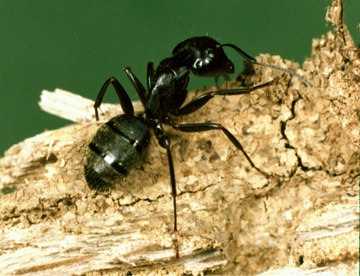All whiteflies suffer from somewhat of an identity crisis, as they are not flies at all. Their tiny, white appearance resembles moths, but they are, in fact, most closely related to sap-sucking aphids. Aphid-cast skins are easily mistaken for that of the whitefly, but whiteflies will quickly fly away if disturbed.
The fact that they hide on the undersides of the leaves, coupled with a quick flight pattern, makes them challenging to manage. Whiteflies are also fruitful because their numbers rapidly increase from two to four, four becomes eight, eight becomes 16, and so on. During the hottest weeks of summer, whiteflies may mature from the egg stage to a reproductive adult in as little as 16 days.
Damage
Whiteflies cause two types of damage to a plant, the first being direct. Whiteflies seriously injure plants by extracting juices from them, causing leaves to yellow, wither, and fall early. If the number of whiteflies per leaf is significant enough, it could lead to plant death. The second, or indirect, happens by way of adult whiteflies. They are able to transmit several viruses from diseased plants to healthy through their mouthparts.
Whiteflies (again like aphids) excrete “honeydew,” which is a sweet substance that forms a sticky coating on leaves. A fungus called “sooty mold” also quickly colonizes, which makes leaves look dirty. Generally speaking, sooty mold is harmless except when it is incredibly expansive, thus preventing light from reaching the surfaces of leaves, which stresses the plant. Sooty mold washes off easily with a forceful stream of water on sturdy plants.
Detection
Like many insects, whiteflies have nymphal and adult stages. Females lay their eggs in arcs or circles on the underside of the leaves that they spend their entire life cycle on. Whitefly nymphs have wingless, oval bodies and no apparent legs or antennae. The adults that emerge from mature larvae are winged and look like a very tiny moth.
Prevention
-
Attract beneficial enemies to your garden.
-
Plant a wide variety of flowering plants or individual insectary plants can provide beneficial insects with the habitats they require. Natural enemies of whiteflies are spiders, small birds, lacewings, ladybugs, and big-eyed bugs.
-
-
Scrutinize new plants. Make sure you aren’t purchasing infected plants.
-
One way to detect an invasion early is to hang sticky traps above the plants at the beginning of the season.
-
Use slow-release, organic fertilizers.
-
Maintain healthy plant growth, but make sure you do not over-fertilize with high nitrogen fertilizers. Too much nitrogen can overstimulate lush plant growth, prompting aphids to reproduce more quickly. Organic fertilizers are superior because they slowly release the proper levels of nutrients.
-
-
Avoid excessive pruning
-
This stimulates whitefly-attracting growth.
-
Use a row cover to exclude whitefly and other pests while still allowing light, air, and water to reach all plants.
-
Control ants by painting or spraying a 4″ wide sticky barrier around woody shrubs or trees.
-
For many sensitive trees, such as citrus, apply a protective barrier of white latex paint to the trunk before the sticky wall.
-
Less-Toxic Control
-
Use a syringe of water on the undersides of leaves on sturdy plants to wash off whiteflies and honeydew.
-
Use a vacuum to suck up whiteflies in the early morning when they are cold and slow-moving.
-
After vacuuming, empty into a sealed plastic bag and remove it from the premise.
-
-
Prune away any severely infested portions of the plant.
-
Place and seal material in bags and remove them from the premise.
-
Dispose properly and do not compost.
-
-
Use insecticidal soaps to kill whiteflies while causing the least harm to beneficial insects.
-
Even coverage of the underside of leaves is essential for effective use. These products do not leave toxic residues, sparing injury to the natural enemies.
-
-
Use spray (horticultural) oils to control whiteflies minimizing adverse effects on natural enemies.
-
To protect bees, avoid applying imidacloprid during the period one month before or during bloom. Removing blossoms before they open on young trees will prevent honey bee exposure to imidacloprid in the nectar/pollen.

